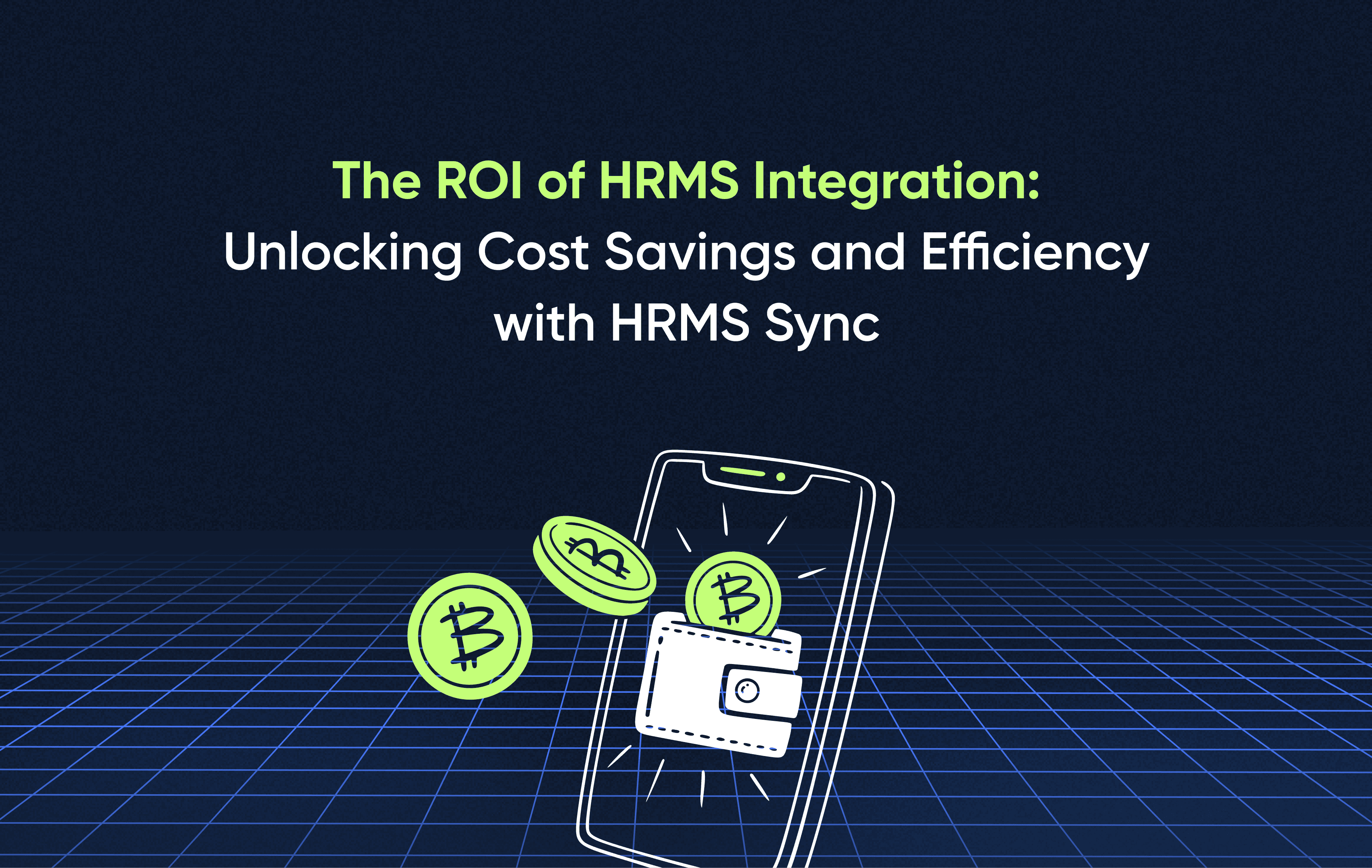
Sep 13, 2024
The ROI of HRMS Integration: Unlocking Cost Savings and Efficiency with HRMS Sync
Managing HR operations can be time-consuming and costly, especially when everything from payroll to benefits to employee data has to be handled manually. That’s where HRMS integration comes in. Businesses can save time, reduce errors, and improve efficiency by connecting different systems. HRMS Sync, a solution designed to streamline data-sharing between companies and their service providers, takes it further. It automates the flow of employee information, ensuring everything is up-to-date and secure. This blog explores how integrating your client’s HRMS with HRMS Sync can save costs and improve overall business operations. Let’s dive into the ROI and benefits it brings to the table.
Understanding HRMS Integration
At its core, HRMS integration connects various HR management systems, including payroll, employee benefits platforms, access management, and several other platforms, to a centralized system. By doing so, businesses can automate data exchange and eliminate the need for manual data uploads, which are often prone to errors. HRMS Sync, a unified API solution, allows service providers and businesses to share real-time employee data, automating processes across industries like insurance, banking, employee benefits, and more.
HRMS Sync saves business time and delivers a tangible ROI by eliminating manual processes and ensuring real-time, secure data sharing. Let’s summarize the key benefits and how they translate into measurable savings.
Key ROI Drivers of Integrating HRMS with HRMS Sync
1. Reduced Administrative Costs
One of the most immediate benefits of integrating HRMS with other business systems is the reduction of administrative costs. Many companies rely on manual data sharing through CSV files, which can be time-consuming and error-prone. HRMS Sync automates this process, allowing seamless data transfer between the HR system and service providers.
For example, consider the case of a corporate travel management company. By integrating HRMS Sync, the company can automatically pull up-to-date employee information from their clients’ HR systems, ensuring accurate travel bookings. This reduces the need for manual data entry, cutting administrative overhead by 25%, as demonstrated in real-world case studies.
Cost savings through automation:
Time saved on manual data entry and updates
Fewer errors that lead to costly corrections
Faster turnaround times on employee services (e.g., insurance claims, travel bookings)
2. Enhanced Accuracy and Compliance
Data accuracy is crucial, especially in industries that deal with sensitive information like employee benefits, corporate banking, and insurance. Mistakes in employee records can lead to delays, missed opportunities, and even compliance violations. HRMS Sync ensures that service providers have real-time access to accurate employee data, reducing the risk of errors.
For instance, HRMS Sync has enabled companies to reduce claim processing times by 40% by eliminating outdated or incorrect employee data in the health insurance sector. This not only boosts customer satisfaction but also saves on administrative costs associated with reprocessing claims and handling customer complaints.
Compliance-driven savings:
Reduced legal risks and penalties
Fewer customer complaints and service delays
Enhanced brand reputation and customer loyalty
3. Faster Onboarding and Employee Services
Integrating HRMS systems through solutions like HRMS Sync accelerates the onboarding process for new employees and streamlines ongoing employee services. By connecting HR systems with providers such as insurance companies or access management systems, businesses can ensure new hires are immediately added to payroll, benefits programs, and security systems without delays.
This level of efficiency leads to faster employee productivity and improved satisfaction. HRMS Sync has reduced account setup times by 50% in corporate banking, ensuring new employees have immediate access to financial services.
Onboarding efficiency:
Reduced time to setup new salary accounts for employees
Immediate access to corporate benefits and accounts
Faster fulfillment for employees and lower frustration levels
4. Reduced IT Burden and Maintenance Costs
Many organizations struggle with the complexity of integrating multiple HRMS systems with their service providers. Traditional IT solutions require significant customization and ongoing maintenance, which can be costly. HRMS Sync alleviates this burden by offering a unified API that connects with over 70 different HRMS systems, eliminating the need for extensive IT resources.
With HRMS Sync, businesses can reduce their reliance on in-house IT teams to manage integrations, as Tartan’s experts handle the integration and maintenance of systems. This reduces the long-term costs associated with system maintenance, updates, and troubleshooting, allowing internal teams to focus on more strategic initiatives.
IT savings:
Lower costs associated with system integration and maintenance
Reduced reliance on in-house IT teams
Faster, smoother system updates
5. Increased Operational Efficiency
The core purpose of HRMS integration is to enhance operational efficiency. With HRMS Sync, service providers can create automated workflows for data processing, ensuring that data is always up-to-date and accessible. For example, an IT company using HRMS Sync saw a 60% reduction in security breaches thanks to automated updates to employee access rights.
This increased operational efficiency translates directly into financial savings. By streamlining workflows, companies can handle more transactions, process more claims, and onboard more employees without increasing administrative resources.
Efficiency-driven ROI:
Increased throughput with existing resources
Enhanced employee and customer satisfaction
Faster, more reliable service delivery
Case Studies: Real ROI from HRMS Sync
Group Health Insurance
Challenge: Processing employee health insurance claims is delayed due to outdated data.
Solution: HRMS Sync integration enabled real-time data feeds.
Outcome: A 40% reduction in claim processing times, improved accuracy, and enhanced customer satisfaction.
Corporate Travel
Challenge: Inaccurate employee data leading to booking errors and compliance issues.
Solution: HRMS Sync ensured real-time data synchronization for travel bookings.
Outcome: 25% decrease in booking errors and improved compliance with corporate travel policies.
Conclusion: The Bottom Line on HRMS Integration ROI
The ROI of HRMS integration is clear: businesses that implement HRMS Sync see significant cost savings, enhanced accuracy, and improved operational efficiency. By automating manual processes, reducing errors, and ensuring real-time data sharing, HRMS Sync delivers immediate and long-term value for businesses across various industries.
With its ability to integrate with over 70 HRMS systems and robust security features, HRMS Sync improves the bottom line and enhances compliance and customer satisfaction. In today’s competitive business landscape, HRMS integration's cost savings and ROI are too significant to ignore. HRMS Sync is the key to unlocking efficiency and cost savings for businesses looking to optimize their HR operations and see tangible ROI. For more information on integrating your client’s HRMS with HRMS Sync, contact support@tartanhq.com.
Pramey Jain
CEO & Founder




